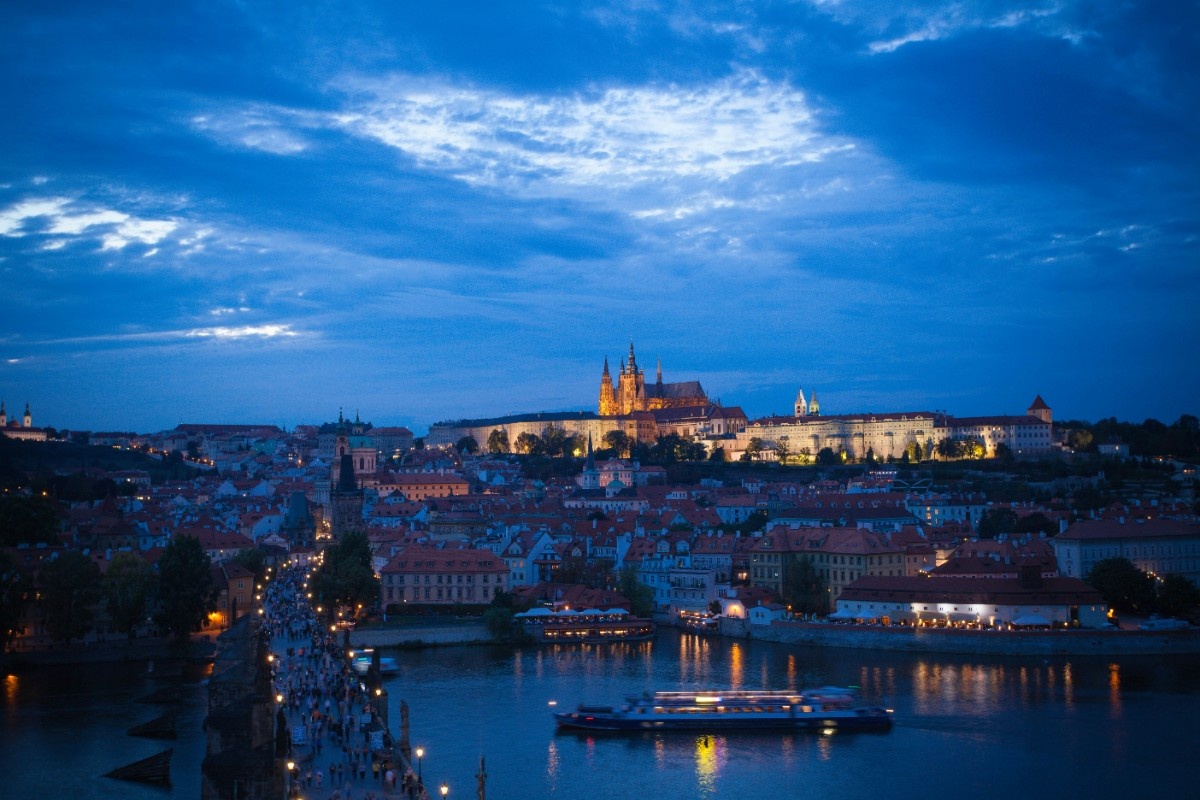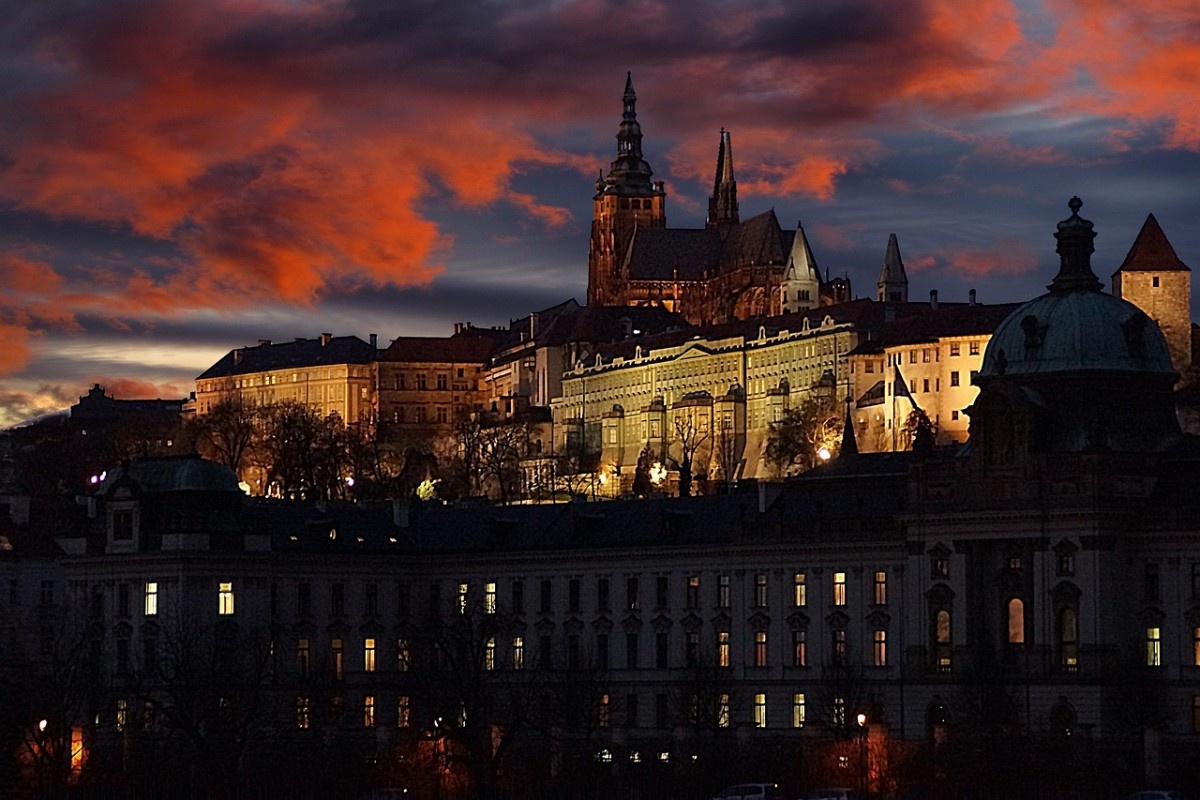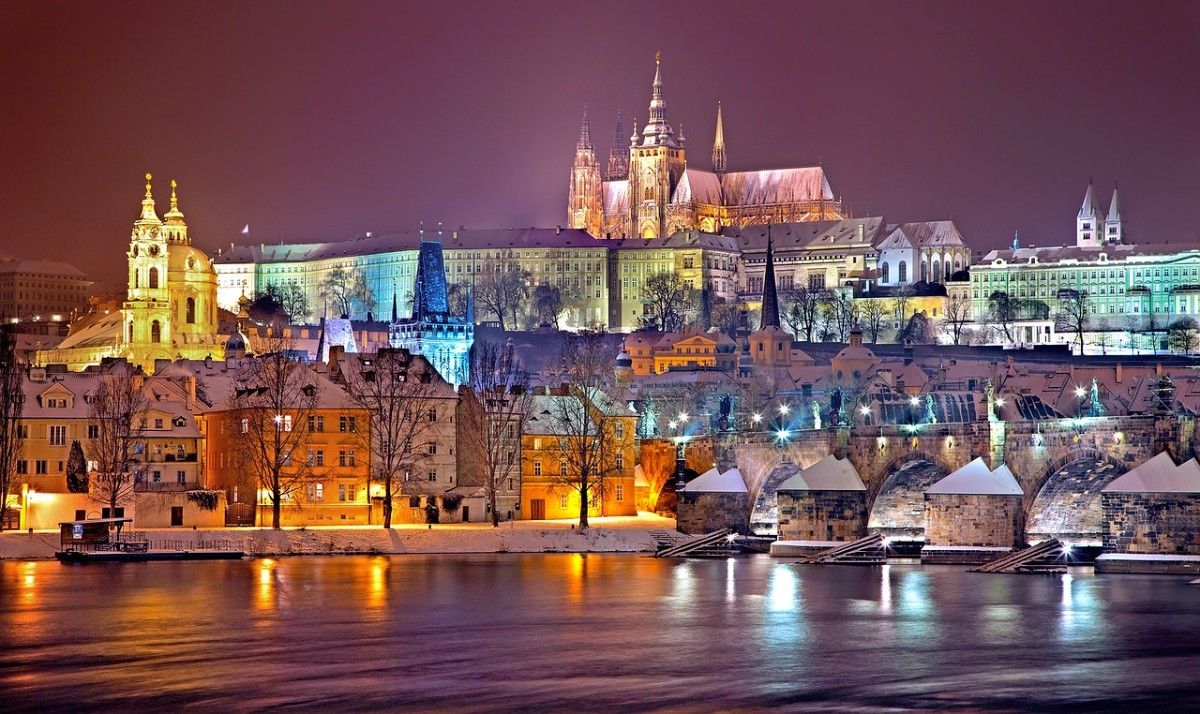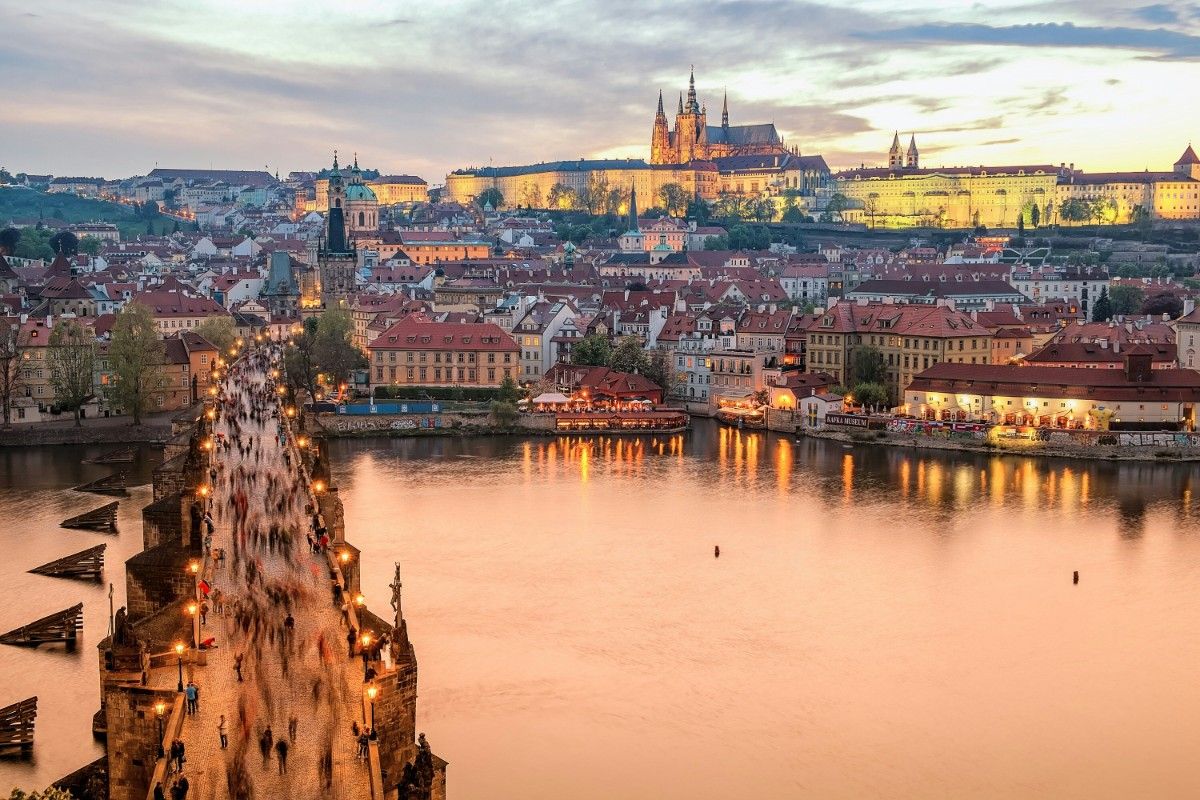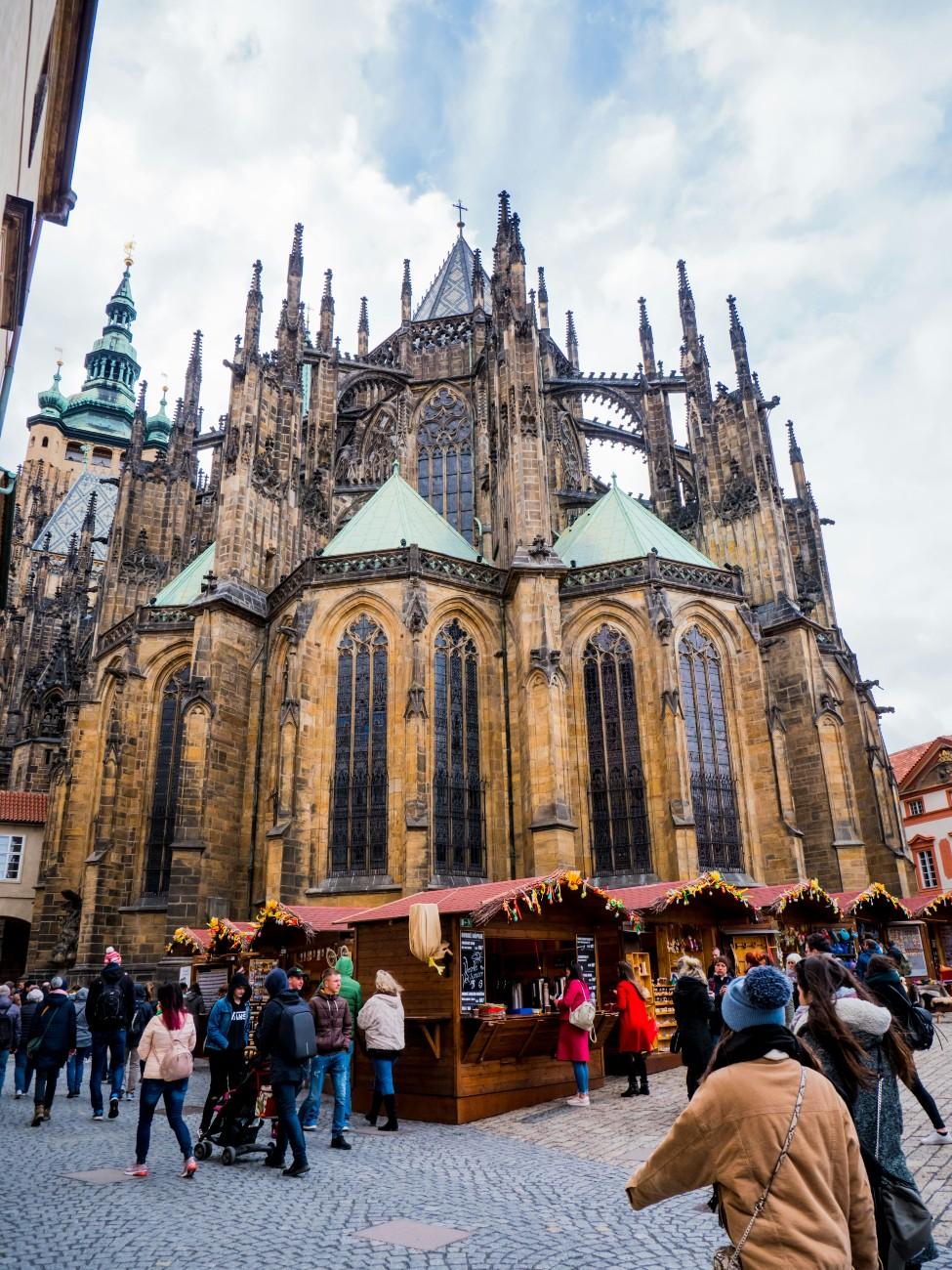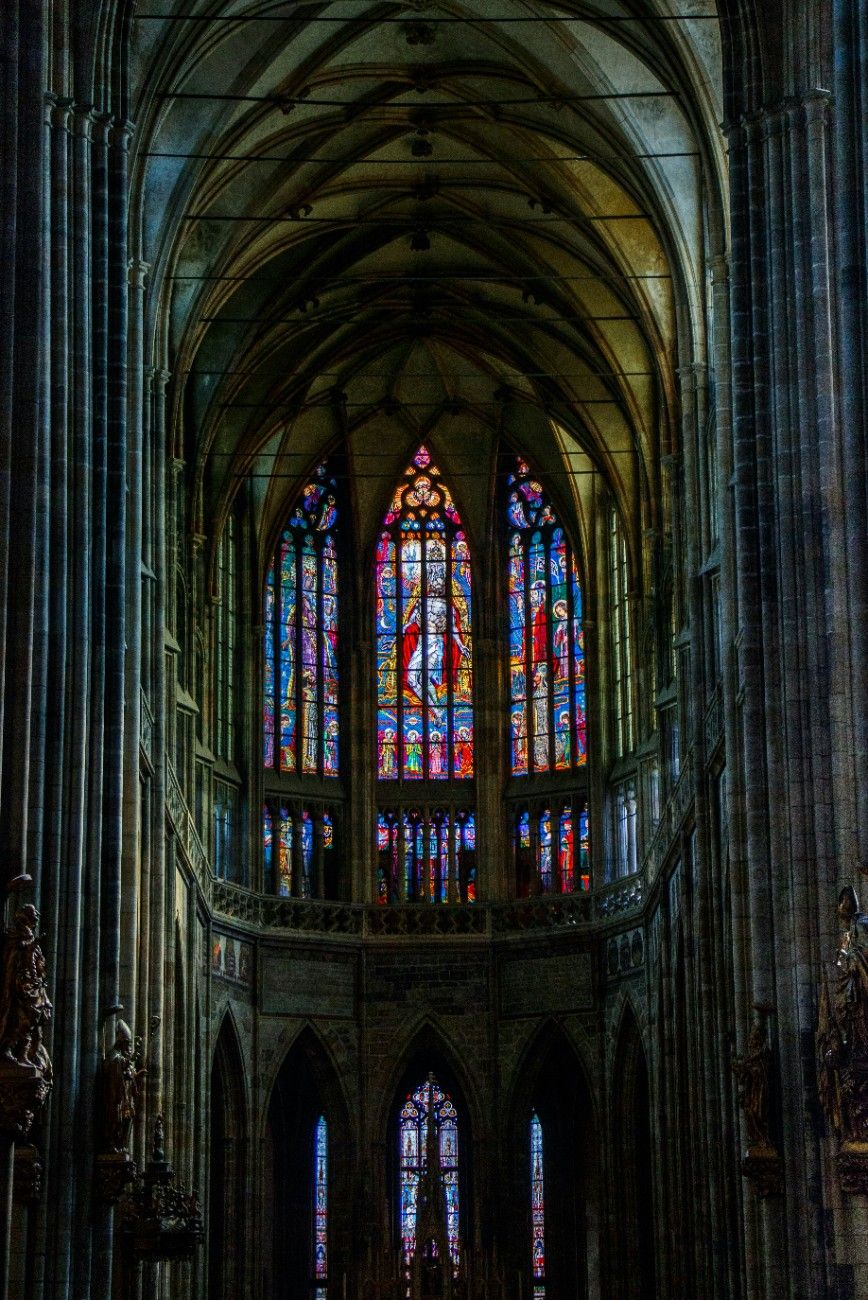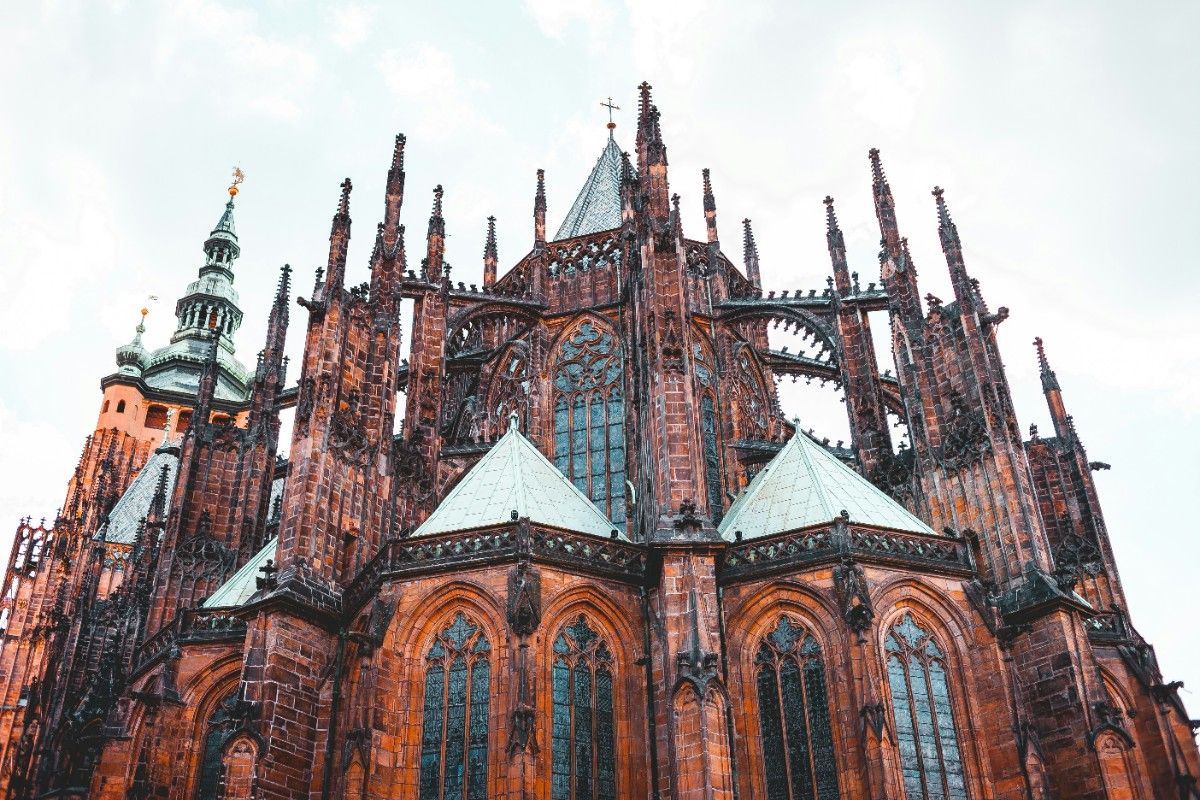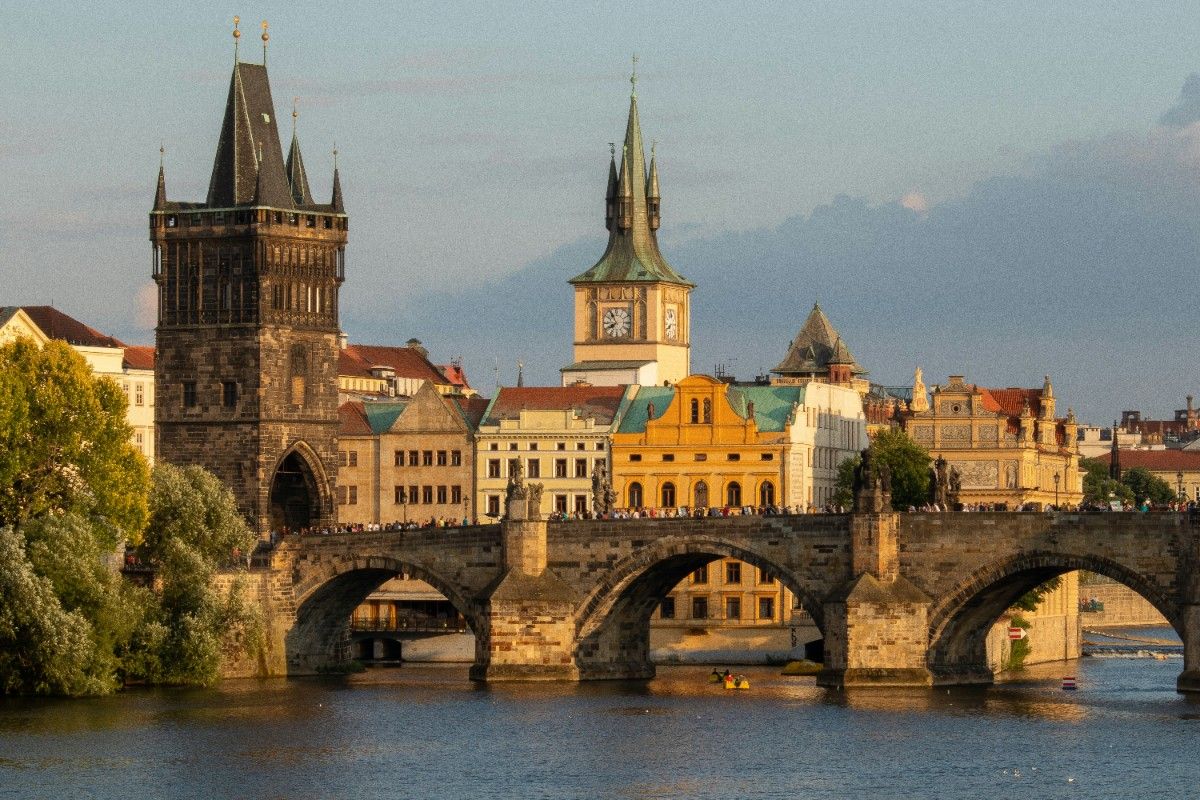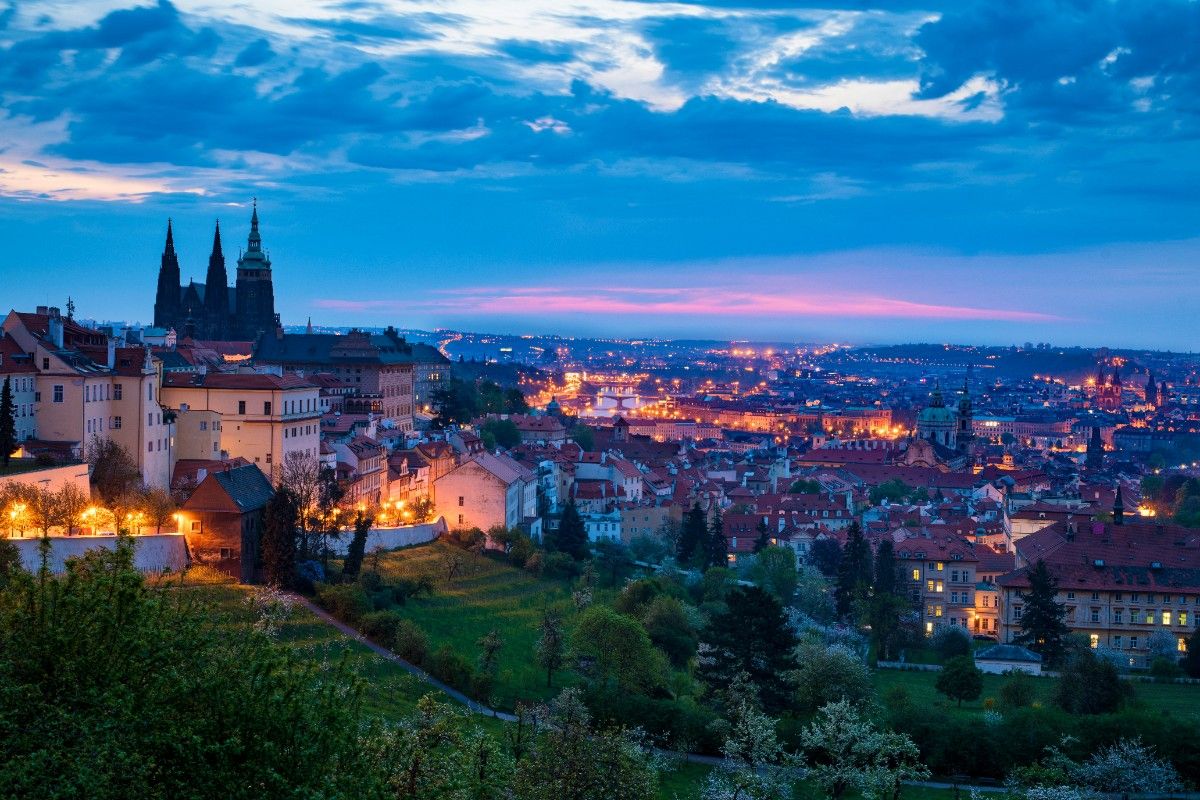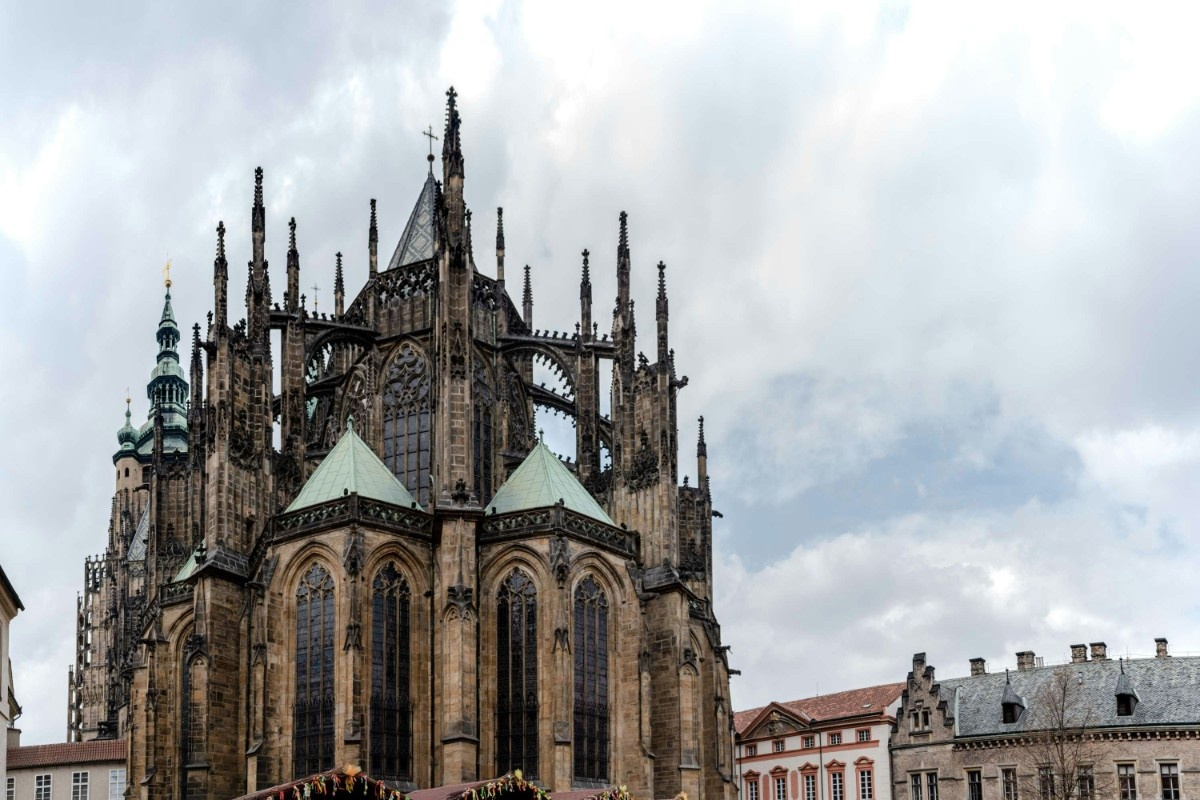Introduction to Prague Castle
Overview of Prague Castle
Prague Castle, situated in the heart of Prague, Czech Republic, is a magnificent architectural marvel that has stood the test of time. As one of the largest ancient castle complexes in the world, it covers an area of approximately 45 hectares and showcases a stunning amalgamation of architectural styles spanning over a thousand years. This iconic landmark attracts millions of visitors annually, captivating them with its rich history, breathtaking beauty, and cultural significance. The castle's strategic location on a hill overlooking the Vltava River has played a crucial role in its development as a symbol of power and authority throughout the centuries.
Prague Castle is not just a single structure but a vast complex composed of palaces, churches, gardens, and fortifications. The most prominent features include the majestic St. Vitus Cathedral, the Old Royal Palace, St. George's Basilica, and the charming Golden Lane. Each of these buildings has its own unique history and architectural style, contributing to the castle's overall grandeur and allure. The castle grounds also house several museums, galleries, and other cultural institutions, making it a hub for art, history, and learning.
Significance of Prague Castle
Prague Castle holds immense significance for the Czech people and is deeply intertwined with the nation's history and identity. For centuries, it has served as the seat of power for Bohemian kings, Holy Roman Emperors, and, more recently, the Presidents of Czechoslovakia and the Czech Republic. The castle has witnessed countless historical events, from coronations and royal weddings to political upheavals and revolutions. Its walls have housed some of the most influential figures in European history, including Charles IV, Rudolf II, and Tomáš Garrigue Masaryk, the first President of Czechoslovakia.
Beyond its political and historical importance, Prague Castle is also a symbol of Czech cultural heritage. The castle complex showcases the evolution of art and architecture in the region, with each building and monument reflecting the styles and influences of different eras. From the Romanesque and Gothic elements of St. George's Basilica and St. Vitus Cathedral to the Renaissance and Baroque features of the Old Royal Palace and the Belvedere, the castle is a testament to the skill and creativity of countless artists, architects, and craftsmen who have contributed to its development over the centuries.
Visiting Prague Castle
A visit to Prague Castle is an essential part of any trip to the Czech capital. The castle complex offers a wide range of attractions and activities for visitors of all ages and interests. Guided tours are available in multiple languages, providing visitors with fascinating insights into the castle's history, architecture, and cultural significance. Audio guides and information materials are also available for those who prefer to explore at their own pace.
When planning a visit to Prague Castle, it is essential to consider factors such as opening hours, ticket prices, and accessibility. The castle complex is open daily, but individual buildings and attractions may have different operating hours. Tickets can be purchased online or at the castle's ticket offices, with various options available depending on the specific areas visitors wish to access. While some parts of the castle may have limited accessibility due to their historical nature, efforts have been made to accommodate visitors with mobility issues wherever possible.
History of Prague Castle
Early History and Foundation
The history of Prague Castle dates back to the late 9th century when Prince Bořivoj of the Premyslid Dynasty established a fortified settlement on the site. This early castle consisted of a simple wooden palisade and a few stone buildings, including a church dedicated to the Virgin Mary. Over the following centuries, the castle underwent numerous expansions and renovations, reflecting the changing needs and tastes of the rulers who called it home.
During the 10th and 11th centuries, the castle complex gradually expanded, with the construction of new fortifications, churches, and palaces. The reign of Prince Vratislaus II in the late 11th century saw the creation of the Basilica of St. George, one of the oldest surviving buildings within the castle grounds. This Romanesque church, with its distinctive twin towers and intricate stone carvings, remains a testament to the early medieval period of the castle's history.
The Golden Age of Prague Castle
The 14th century marked a significant turning point in the history of Prague Castle, as it entered a period of unprecedented growth and development under the reign of Charles IV, the first King of Bohemia to become Holy Roman Emperor. Charles IV was a great patron of the arts and architecture, and he transformed Prague into a magnificent Gothic city, with the castle at its centre. He commissioned the construction of several new buildings within the castle complex, including the iconic St. Vitus Cathedral, which became the spiritual heart of the nation.
During this golden age, Prague Castle became a hub of cultural and intellectual activity, attracting artists, scholars, and dignitaries from across Europe. The castle's Vladislav Hall, built during the reign of Vladislaus II in the late 15th century, served as a venue for grand events, such as coronations, banquets, and even indoor jousting tournaments. The hall's unique vaulted ceiling, spanning over 16 meters without supporting columns, is a testament to the architectural prowess of the time.
Renaissance and Baroque Eras
The Renaissance and Baroque periods brought further changes and additions to Prague Castle. In the 16th century, Emperor Ferdinand I commissioned the construction of the Royal Garden, a beautiful terraced garden in the Italian Renaissance style. The garden features ornate fountains, sculptures, and a charming summerhouse called the Queen Anne's Belvedere, which showcases the elegant Renaissance architecture of the period.
The 17th and 18th centuries saw the construction of several new palaces and buildings within the castle complex, reflecting the Baroque style that had become popular across Europe. The most notable of these additions was the Theresian Wing, built during the reign of Empress Maria Theresa in the 18th century. This grand Baroque structure now houses the Prague Castle Picture Gallery, which boasts an extensive collection of European art from the 16th to the 18th centuries.
Modern History and Restoration
The 20th century brought significant changes and challenges to Prague Castle and the Czech nation. Following the establishment of an independent Czechoslovakia in 1918, the castle became the seat of the new republic's president, a role it continues to serve for the Czech Republic today. During World War II, the castle was occupied by Nazi forces, and some of its treasures were looted or destroyed. However, after the war, extensive restoration work was undertaken to repair the damage and preserve the castle's rich heritage.
In the latter half of the 20th century, Prague Castle underwent a series of renovations and modernisations to adapt to its new role as the seat of a modern democratic nation. These efforts included the creation of new exhibition spaces, the restoration of historic buildings and artworks, and the improvement of visitor facilities and accessibility. Today, Prague Castle stands as a symbol of the Czech people's resilience and cultural pride, welcoming visitors from around the world to explore its fascinating history and marvel at its timeless beauty.
Architecture and Notable Buildings
Architectural Styles and Influences
Prague Castle is a stunning showcase of architectural diversity, featuring a range of styles from different historical periods. As you explore the castle grounds, you'll encounter Romanesque, Gothic, Renaissance, Baroque, and Neoclassical elements, each contributing to the complex's unique character and charm. The castle's architecture reflects the changing tastes and influences of the rulers who have called it home over the centuries, as well as the skill and creativity of the architects and craftsmen who have worked on it.
The oldest surviving buildings within the castle complex, such as St. George's Basilica and the Rotunda of St. Vitus, date back to the Romanesque period (10th-12th centuries). These structures are characterised by their thick stone walls, round arches, and simple, yet elegant decorations. The Gothic period (13th-15th centuries) brought significant changes to the castle's architecture, with the construction of the magnificent St. Vitus Cathedral and the Vladislav Hall, both of which feature soaring vaulted ceilings, pointed arches, and intricate stone carvings.
The Renaissance and Baroque periods (16th-18th centuries) saw the addition of several new palaces and gardens to the castle complex, reflecting the grandeur and opulence of the Habsburg monarchy. The Royal Garden, with its elegant Italian-style terraces and fountains, and the Theresian Wing, with its ornate Baroque façade and richly decorated interiors, are prime examples of these architectural styles. The Neoclassical influence can be seen in the New Royal Palace, built in the late 18th century, which features a simple, symmetrical design and clean lines, in contrast to the more elaborate styles of earlier periods.
St. Vitus Cathedral
St. Vitus Cathedral, the spiritual heart of Prague Castle, is a masterpiece of Gothic architecture and one of the most recognisable landmarks in the city. The construction of the cathedral began in 1344 under the patronage of Charles IV, but it took nearly six centuries to complete, with the final touches added in 1929. The cathedral's impressive exterior features flying buttresses, pointed arches, and intricate stone carvings, while its towering spires dominate the Prague skyline.
Inside, the cathedral is equally breathtaking, with soaring vaulted ceilings, stunning stained glass windows, and a wealth of artistic treasures. The St. Wenceslas Chapel, dedicated to the patron saint of Bohemia, is a particularly notable feature, with its walls adorned with semi-precious stones and gold, and its ornate frescoes depicting scenes from the saint's life. The cathedral also houses the tombs of Bohemian kings and saints, as well as the Czech Crown Jewels, which are displayed to the public on rare occasions.
Old Royal Palace
The Old Royal Palace, dating back to the 12th century, has served as the residence of Bohemian kings and emperors for centuries. This complex of buildings has undergone numerous renovations and expansions over the years, reflecting the changing styles and needs of its royal inhabitants. One of the most impressive features of the palace is the Vladislav Hall, a grand ceremonial space built in the late Gothic style during the reign of Vladislaus II.
The Vladislav Hall, with its stunning vaulted ceiling and large windows, was once used for coronations, banquets, and even indoor jousting tournaments. The hall's unique design, featuring a series of intersecting ribs and a span of over 16 meters without supporting columns, is a testament to the architectural and engineering skills of the 15th century. Other notable rooms in the Old Royal Palace include the Diet, where the Bohemian Parliament once met, and the Chancery, which housed the royal administration.
Other Notable Buildings
In addition to St. Vitus Cathedral and the Old Royal Palace, Prague Castle is home to several other notable buildings and structures that showcase the complex's architectural diversity and historical significance. These include:
St. George's Basilica and Convent: One of the oldest surviving buildings in the castle complex, St. George's Basilica is a beautiful example of Romanesque architecture, with its simple, yet elegant stone façade and twin towers. The adjoining convent now houses a collection of 19th-century art from the National Gallery.
Golden Lane: This picturesque row of small, colourful houses, nestled against the castle's northern wall, was originally built in the 16th century to house the castle's guards and servants. Later, the houses became home to various artisans and tradespeople, including the renowned writer Franz Kafka, who lived in house No. 22 for a short period.
Belvedere: This elegant Renaissance summer palace, located in the Royal Garden, was built in the mid-16th century for Queen Anne, the wife of Ferdinand I. The Belvedere features a beautiful arcaded loggia and a distinctive copper roof, making it a striking example of the Italian Renaissance style in Prague.
Daliborka Tower: Named after the legendary knight Dalibor of Kozojedy, who was imprisoned there in the late 15th century, the Daliborka Tower serves as a reminder of the castle's former role as a prison. Today, the tower houses a small exhibition on the history of the castle's fortifications and prisons.
These buildings, along with the many other palaces, gardens, and monuments within the castle complex, contribute to Prague Castle's status as one of the most significant and impressive architectural ensembles in Europe, attracting millions of visitors each year to marvel at its beauty and learn about its fascinating history.
Must-See Attractions and Exhibits
St. Vitus Cathedral Interior
No visit to Prague Castle is complete without exploring the stunning interior of St. Vitus Cathedral. The cathedral's nave, with its soaring vaulted ceiling and beautiful stained glass windows, is a sight to behold. The most notable features include the exquisite St. Wenceslas Chapel, adorned with semi-precious stones and gold, and the royal mausoleum, which houses the tombs of Bohemian kings and queens.
The cathedral also boasts a wealth of artistic treasures, including the striking silver tomb of St. John of Nepomuk, the Baroque pulpit, and the intricate mosaic of the Last Judgment above the Golden Gate. Visitors can explore the cathedral's many side chapels and altars, each with its own unique history and artistic merits. For those interested in the cathedral's architectural details, guided tours are available, offering fascinating insights into the building's construction and symbolism.
Old Royal Palace and Vladislav Hall
The Old Royal Palace, with its centuries of history as the residence of Bohemian kings and emperors, is another must-see attraction within Prague Castle. The highlight of the palace is undoubtedly the Vladislav Hall, a stunning example of late Gothic architecture, with its unique vaulted ceiling and impressive size. Visitors can admire the hall's intricate design and imagine the grand events that once took place there, from coronation banquets to indoor jousting tournaments.
Other notable rooms within the Old Royal Palace include the Diet, where the Bohemian Parliament once met, and the Chancery, which housed the royal administration. These spaces offer a glimpse into the political and administrative life of the castle throughout history. The palace also features exhibitions on the history of Prague Castle and the Czech lands, providing visitors with a deeper understanding of the complex's significance.
Prague Castle Galleries and Museums
Prague Castle is home to several galleries and museums that showcase the rich artistic and cultural heritage of the Czech lands. The Prague Castle Picture Gallery, located in the Theresian Wing, houses an extensive collection of European art from the 16th to the 18th centuries, including works by renowned artists such as Titian, Rubens, and Velázquez. The gallery's impressive Baroque interiors provide a fitting backdrop for the masterpieces on display.
The Toy Museum, located in the former stables of the castle complex, is another popular attraction, especially for families with children. The museum features a vast collection of toys from around the world, spanning several centuries and showcasing the evolution of playthings over time. The museum also offers hands-on activities and workshops, allowing visitors to engage with the exhibits in a fun and interactive way.
Royal Garden and Belvedere
The Royal Garden, located on the southern side of Prague Castle, is a beautiful oasis of tranquillity amidst the bustling castle complex. This Renaissance-style garden, established in the 16th century, features elegant terraces, ornate fountains, and well-manicured lawns and hedges. Visitors can stroll along the garden's paths, admire the stunning views of the city, and relax in the shade of the trees.
One of the highlights of the Royal Garden is the Belvedere, a stunning Renaissance summer palace built for Queen Anne in the mid-16th century. The Belvedere's elegant arcaded loggia and distinctive copper roof make it a striking example of the Italian Renaissance style in Prague. Visitors can explore the palace's interiors, which house temporary exhibitions on various aspects of castle history and culture.
Golden Lane and Daliborka Tower
The Golden Lane, a charming row of small, colourful houses nestled against the castle's northern wall, is a popular attraction that offers a glimpse into the lives of the castle's former inhabitants. Originally built in the 16th century to house the castle's guards and servants, the houses later became home to various artisans and tradespeople, including the renowned writer Franz Kafka.
Today, the houses have been converted into small museums and shops, each showcasing a different aspect of life in the castle throughout history. Visitors can explore the interiors of these quaint dwellings, learn about the various professions and crafts practiced by their former residents, and purchase souvenirs and handicrafts.
Adjacent to the Golden Lane is the Daliborka Tower, a 15th-century prison tower named after the legendary knight Dalibor of Kozojedy. The tower now houses a small exhibition on the history of the castle's fortifications and prisons, offering visitors a fascinating glimpse into the darker aspects of the complex's past.
These must-see attractions and exhibits within Prague Castle offer visitors a comprehensive and engaging experience, showcasing the complex's rich history, stunning architecture, and artistic treasures. Whether exploring the grandeur of St. Vitus Cathedral, admiring the masterpieces in the Castle Picture Gallery, or discovering the charm of the Golden Lane, visitors are sure to be captivated by the many wonders of this iconic landmark.
Visiting Information and Tickets
Ticketing Options and Prices
When planning a visit to Prague Castle, it's essential to understand the various ticketing options available to ensure you make the most of your experience. The castle offers several ticket types, each granting access to different combinations of attractions within the complex.
The most comprehensive option is the Circuit A ticket, which includes entry to all of the castle's main attractions, such as St. Vitus Cathedral, the Old Royal Palace, St. George's Basilica, the Golden Lane, and Daliborka Tower. As of 2023, the Circuit A ticket costs 350 CZK for adults, 175 CZK for children and students, and 700 CZK for families (2 adults + up to 5 children).
For those with more limited time or specific interests, the Circuit B ticket offers access to a smaller selection of attractions, including St. Vitus Cathedral, the Old Royal Palace, St. George's Basilica, and the Golden Lane. This ticket costs 250 CZK for adults, 125 CZK for children and students, and 500 CZK for families.
Visitors who primarily wish to explore the castle's gardens and outdoor areas can opt for the Circuit C ticket, which grants entry to the Lobkowicz Palace, the Royal Gardens, and the Riding School. This ticket costs 150 CZK for adults, 80 CZK for children and students, and 300 CZK for families.
It's important to note that ticket prices may be subject to change, so it's always a good idea to check the official Prague Castle website for the most up-to-date information on ticketing and pricing.
Opening Hours and Best Times to Visit
Prague Castle is open year-round, but the opening hours vary depending on the season and the specific attraction within the complex. Generally, the castle grounds are accessible from 6:00 am to 10:00 pm, while the individual buildings and exhibitions have more limited hours.
During the summer season (April to October), the main attractions are typically open from 9:00 am to 5:00 pm, with some variations. In the winter season (November to March), the opening hours are slightly reduced, usually from 9:00 am to 4:00 pm. It's essential to check the official website or on-site information boards for the most accurate opening hours for each attraction during your visit.
To make the most of your time at Prague Castle and avoid crowds, it's best to plan your visit for the early morning or later in the afternoon. The castle tends to be busiest during the middle of the day, particularly in the peak summer months. Weekdays are generally less crowded than weekends, so if your schedule allows, consider visiting on a weekday for a more relaxed experience.
Guided Tours and Audio Guides
For those looking to gain a deeper understanding of Prague Castle's history, architecture, and cultural significance, guided tours are an excellent option. The castle offers a variety of tours led by knowledgeable guides, available in several languages, including English, Spanish, French, German, Italian, and Russian.
Guided tours typically last between 1 and 3 hours, depending on the specific tour and the attractions covered. Some popular options include the "Prague Castle Tour," which provides a comprehensive overview of the complex's main sights, and the "Prague Castle After Dark Tour," which offers a unique perspective on the castle's history and legends in the evening hours.
For visitors who prefer to explore at their own pace, audio guides are available for rent at the castle's information centres. These handheld devices provide informative commentary on the castle's various attractions, allowing you to delve into the history and stories behind each site as you traverse the complex.
Accessibility and Visitor Services
Prague Castle strives to be accessible to all visitors, but due to the historical nature of the buildings and the complex's layout, some areas may present challenges for those with limited mobility. However, efforts have been made to improve accessibility where possible, and many of the main attractions, such as St. Vitus Cathedral and the Old Royal Palace, are equipped with ramps or lifts.
Visitors with specific accessibility needs are encouraged to contact the castle's information centres in advance of their visit for guidance and assistance in planning their itinerary. The castle also offers a range of visitor services to enhance the experience, including restrooms, cloakrooms, and a variety of dining options, from casual cafes to fine dining restaurants.
Additionally, several souvenir shops and bookstores are located throughout the castle complex, offering a wide selection of gifts, postcards, books, and other items related to Prague Castle and Czech history and culture. These amenities ensure that visitors have a comfortable and enjoyable experience while exploring this iconic landmark.
Surrounding Areas and Nearby Attractions
Hradčany: The Castle District
The neighbourhood surrounding Prague Castle, known as Hradčany, is a captivating area filled with historical charm, picturesque streets, and stunning views of the city. This castle district is an attraction in itself, offering visitors the opportunity to explore a wealth of hidden gems and architectural treasures.
One of the most notable sites in Hradčany is the Loreta, a stunning Baroque pilgrimage complex built in the 17th century. The Loreta is home to a replica of the Santa Casa, a revered Christian site in Italy, as well as a beautiful clocktower featuring an intricate astronomical clock. Visitors can explore the complex's chapels, cloisters, and treasury, which houses a collection of precious religious artifacts.
Another highlight of the castle district is the Strahov Monastery, a 12th-century Premonstratensian abbey known for its stunning Theological Hall and Philosophical Hall libraries. These ornate Baroque libraries house an extensive collection of rare books, manuscripts, and globes, and are considered among the most beautiful in the world. The monastery also features a gallery showcasing an impressive collection of Gothic, Renaissance, and Baroque art.
As you wander through the charming streets of Hradčany, you'll encounter numerous palaces, gardens, and historic houses, each with its own unique character and story. The Schwarzenberg Palace, a beautiful Renaissance building with a distinctive sgrafitto-decorated façade, now serves as a venue for exhibitions and cultural events. The nearby Sternberg Palace, a Baroque masterpiece, houses the National Gallery's collection of European art from the Classical era to the end of the Baroque period.
Malá Strana: The Lesser Town
At the foot of Prague Castle lies Malá Strana, a picturesque neighbourhood known for its Baroque architecture, charming squares, and cobblestone streets. This area, also known as the Lesser Town, is a popular destination for tourists and locals alike, offering a mix of historical sites, cultural attractions, and quaint cafes and shops.
One of the most prominent landmarks in Malá Strana is St. Nicholas Church, a stunning example of Baroque architecture. The church's imposing dome and ornate interior, featuring intricate frescoes and sculptures, make it a must-see for art and history enthusiasts. Visitors can also climb the church tower for panoramic views of the neighbourhood and the castle.
The heart of Malá Strana is the picturesque Malostranské náměstí, or Lesser Town Square, surrounded by beautiful Baroque palaces and historic buildings. The square is home to several notable sites, including the Malostranská beseda, a cultural centre hosting concerts, exhibitions, and theatre performances, and the stunning Lichtenstein Palace, now serving as the Czech Republic's Ministry of Foreign Affairs.
For a tranquil escape, head to the nearby Vojanovy sady, a serene Baroque garden tucked away behind the U.S. Embassy. This hidden oasis features well-manicured lawns, flower beds, and statues, providing a peaceful retreat from the bustling city streets.
Notable Streets and Bridges
Connecting Prague Castle and Malá Strana to the Old Town across the Vltava River are several notable streets and bridges that are attractions in their own right. The most famous of these is the iconic Charles Bridge, a 14th-century stone bridge adorned with 30 Baroque statues of saints and historical figures. Strolling across the Charles Bridge offers stunning views of the castle, the river, and the cityscape, particularly at sunrise or sunset.
Leading up to the castle from Malá Strana is the picturesque Nerudova Street, named after the renowned 19th-century Czech poet Jan Neruda. This winding cobblestone street is lined with beautiful Baroque houses, many of which feature distinctive house signs depicting various professions, animals, or mythical creatures. These signs served as a form of address in the days before street numbers.
Another charming street to explore is Mostecká, which runs from Malostranské náměstí to the Charles Bridge. This narrow, pedestrian-friendly lane is lined with colourful historic buildings, now housing a variety of shops, cafes, and galleries. Mostecká offers a delightful atmosphere and plenty of opportunities for souvenir shopping or enjoying a traditional Czech meal or beverage.
Parks and Gardens
In addition to the Royal Garden within Prague Castle, the surrounding areas offer several beautiful parks and gardens that provide a welcome respite from the hustle and bustle of the city. One such oasis is Petřín Hill, a large park located just south of the castle. Visitors can take a funicular railway or hike up the hill to enjoy panoramic views of Prague, stroll through the rose garden, or visit the Petřín Lookout Tower, a miniature replica of the Eiffel Tower.
At the foot of Petřín Hill lies Kinský Garden, a beautiful English-style landscaped garden featuring winding paths, a tranquil pond, and a charming neo-Gothic summerhouse called the Kinský Folly. The garden is a popular spot for picnics, relaxation, and outdoor activities.
Another hidden gem is the Wallenstein Garden, a stunning Baroque garden located in the Malá Strana district. This geometrically designed garden features ornate sculptures, fountains, and an impressive dripstone wall that resembles a stalactite cave. The garden is part of the Wallenstein Palace complex, which now serves as the seat of the Czech Senate.
These parks and gardens offer visitors the opportunity to unwind, enjoy nature, and discover new perspectives on the city and its surroundings, all within easy reach of Prague Castle and its neighbouring attractions.
Interesting Facts and Legends
The Bohemian Crown Jewels
One of the most fascinating aspects of Prague Castle's history is the story of the Bohemian Crown Jewels, a collection of royal regalia used during the coronation ceremonies of Bohemian kings and queens. The crown jewels, which include the St. Wenceslas Crown, the Royal Orb, and the Royal Sceptre, are considered among the most valuable and historically significant treasures in the Czech Republic.
The St. Wenceslas Crown, named after the patron saint of Bohemia, is particularly noteworthy. This stunning gold and precious stone-adorned crown was commissioned by Emperor Charles IV in the 14th century and features a unique design incorporating four vertical fleurs-de-lis, symbolising the royal dignity of Bohemia. Legend has it that the crown was originally worn by St. Wenceslas himself, adding to its spiritual and historical significance.
Today, the Bohemian Crown Jewels are kept under tight security in a special chamber within St. Vitus Cathedral, accessible only by a unique set of keys held by seven different officials, including the President of the Czech Republic, the Prime Minister, and the Archbishop of Prague. The crown jewels are displayed to the public only on rare, historically significant occasions, such as the inauguration of a new president or important anniversaries, making their appearances all the more special and eagerly anticipated.
The Defenestrations of Prague
Prague Castle has been the site of several dramatic events throughout its history, but perhaps none are as infamous as the Defenestrations of Prague. The term "defenestration" refers to the act of throwing someone or something out of a window, and in the context of Prague's history, it has taken on a much more significant meaning.
The First Defenestration of Prague occurred in 1419 when a group of Hussite rebels, followers of the reformer Jan Hus, threw seven members of the Prague City Council out of the windows of the New Town Hall, sparking the Hussite Wars. While this event did not take place at Prague Castle itself, it set the stage for future defenestrations that would have a direct impact on the castle and its inhabitants.
The Second Defenestration of Prague, which took place in 1618, is perhaps the most famous. During this event, a group of Protestant nobles threw two Catholic governors and their scribe out of a window at Prague Castle, an act that ignited the Thirty Years' War, one of the deadliest conflicts in European history. Remarkably, all three men survived the fall, thanks to a combination of luck and, as some believe, divine intervention.
The Third Defenestration of Prague occurred in 1948, during the turbulent period following World War II. In this case, Jan Masaryk, the Czechoslovak foreign minister, was found dead beneath the window of his apartment in the Czernin Palace, which housed the Ministry of Foreign Affairs. While the official report stated that Masaryk committed suicide, many believe he was murdered by the communist regime, making his death a symbol of the country's struggle for freedom and democracy.
These dramatic events have left an indelible mark on the history of Prague Castle and the city as a whole, serving as powerful reminders of the complex political, religious, and social forces that have shaped the Czech lands over the centuries.
Legends and Mysteries
In addition to its well-documented history, Prague Castle is also steeped in legends and mysteries that have captivated the imaginations of visitors and locals alike for generations. One of the most enduring legends is that of the Golem, a clay figure brought to life by the 16th-century Rabbi Loew to protect the Jewish community of Prague from persecution.
According to the legend, the Golem grew increasingly violent and uncontrollable, forcing Rabbi Loew to deactivate it and store it in the attic of the Old New Synagogue. Some believe that the Golem still lies dormant in the synagogue, waiting to be called upon in times of need.
Another intriguing mystery surrounding Prague Castle involves the Templar Knights, a powerful medieval military order shrouded in secrecy and speculation. Some theories suggest that the Templars may have hidden a portion of their fabled treasure within the castle grounds or the surrounding areas, sparking countless treasure hunts and inspiring numerous works of fiction and popular culture.
These legends and mysteries add an extra layer of intrigue to the already fascinating history of Prague Castle, inviting visitors to explore the complex's many nooks and crannies and to imagine the untold stories that may lie hidden within its ancient walls.
Tips for Visiting and Practical Information
Planning Your Visit
To make the most of your visit to Prague Castle, it is essential to plan ahead and consider a few key factors. First, decide which attractions within the castle complex are most important to you, and allocate your time accordingly. With so much to see and do, it can be helpful to prioritise your must-see sites and create a rough itinerary to ensure you don't miss anything.
When planning your visit, be sure to check the opening hours for each attraction, as they may vary depending on the season and day of the week. Keep in mind that the castle tends to be busiest during the middle of the day, particularly in the peak summer months, so consider visiting early in the morning or later in the afternoon to avoid crowds.
If you're interested in taking a guided tour or using an audio guide, research the available options in advance and make any necessary reservations or arrangements. This can help you save time and ensure you have access to the resources you need to fully appreciate the castle's history and significance.
Dress Code and Comfort
While there is no strict dress code for visiting Prague Castle, it is important to dress appropriately, particularly when entering religious sites such as St. Vitus Cathedral. As a general rule, it is best to avoid wearing shorts, sleeveless tops, or other revealing clothing in these areas as a sign of respect.
Given the castle's vast size and the amount of walking involved in exploring its many attractions, it is crucial to wear comfortable shoes with good support. The castle grounds include a mix of cobblestone streets, stairs, and uneven surfaces, so sturdy footwear is essential to prevent fatigue and discomfort.
Additionally, be sure to check the weather forecast before your visit and dress accordingly. Prague can experience a range of temperatures and weather conditions throughout the year, from hot and sunny summers to chilly, damp winters. Layering your clothing and bringing a light jacket or umbrella can help you stay comfortable and prepared for any weather.
Refreshments and Dining
Exploring Prague Castle can be a lengthy and energy-intensive endeavour, so it's important to stay hydrated and fuelled throughout your visit. While there are several cafes and restaurants located within the castle complex, including the charming Lobkowicz Palace Café and the upscale Deer Moat Restaurant, these options can be pricey and crowded during peak hours.
To save money and avoid waiting in lines, consider bringing your own water bottle and some light snacks to keep you going throughout the day. There are also numerous dining options in the surrounding neighbourhoods of Hradčany and Malá Strana, ranging from casual cafes and pubs to fine dining restaurants, where you can enjoy a sit-down meal and rest your feet after a long day of sightseeing.
Photography and Souvenirs
Prague Castle is a photographer's dream, with countless opportunities to capture stunning images of its architecture, artwork, and panoramic views. However, it's essential to be mindful of any photography restrictions in place, particularly within the castle's interior spaces.
In general, photography is permitted in most outdoor areas of the castle complex, but some indoor exhibits and attractions may prohibit or limit photography to protect delicate artworks or maintain a respectful atmosphere. Be sure to check for any posted signs or guidelines, and always ask permission before taking photos of castle staff, guards, or other visitors.
If you're looking to bring home a piece of Prague Castle's magic, there are several souvenir shops located throughout the complex, offering a wide range of items from postcards and magnets to replica artwork and Bohemian crystal. For a more authentic shopping experience, consider exploring the artisan workshops and boutiques in the surrounding neighbourhoods, where you can find unique, locally-made crafts and goods that reflect the rich cultural heritage of Prague and the Czech Republic.
By keeping these practical tips in mind and allowing yourself plenty of time to explore, you'll be well-prepared to fully immerse yourself in the wonder and beauty of Prague Castle, creating memories that will last a lifetime.
Related Articles

Let us know you agree to cookies
We use marketing, analytical and functional cookies as well as similar technologies to give you the best experience. Third parties, including social media platforms, often place tracking cookies on our site to show you personalised adverts outside of our website.
We store your cookie preferences for two years and you can edit your preferences via ‘manage cookies’ or through the cookie policy at the bottom of every page. For more information, please see our cookie policy.
